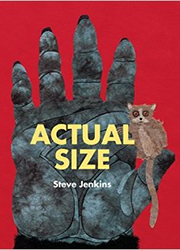SUBJECTS
GRADE
Show Results
How Do You Measure Up?

Lesson Summary
- Find measurements that relate to the measurements of the body.
- Measure with standard and nonstandard units.
Lesson Plan and Procedure
Lesson Key Facts
- Grade(s): 1
- Subject(s): Dance, Math
- Duration of lesson: 30 minutes
- Author(s): Jana Shumway
Experience/Identify
Play the song “Fireflies” by Owl City.
Show the distance of one inch with your finger and thumb. Have the children do the same. Have them go around the room finding things that are one inch apart.
Do the same with one foot, but show it with two hands. Again, have the children explore the room. Explain that 12 inches is the same as one foot.
Show on a yardstick how if you add 12 inches to 12 inches, you get two feet. Then if you add 12 inches again, you get three feet, which is a yard.
Have the children stand up really tall—as if they had just been sucked up a straw—and walk around them, noting how almost all the children are taller than three feet.
Have the children create a three-foot-tall shape, a two-foot-tall shape, and then a one-foot-tall shape. Walk around them with the yardstick, measuring a few of the children’s shapes as they make them.
Explore/Investigate
Play “Sun of Jamaica” by Cusco.
Show the pictures in the book Actual Size by Steve Jenkins. Go back through each picture a second time, but this time stop on each picture to explore it with movement.

With tape already pre-measured and placed on the walls and floors around the room, see if the children can match the animal measurement in the book to the tape line that is the same length. (Use a variety of colors to help the children identify the lengths by color also. For example, “the tall yellow tape.”)
Once the children think they have found the matching line, measure to see if they are correct. If they are correct, have the children make a shape the same size as that line and in the same shape as that particular animal. If the animal is too small, have them just use a body part to create the shape. If the animal is too large, have the children either stretch, pretending that they are bigger, or have the class create the shape together.
Note: In the Equipment and Materials Needed section, there is a list of the animals, their lengths, and suggestions for how to place the tape.

Create/Perform
Use the drum for background music.
Create a dance using the above ideas. The following is an example.
Teacher: Start in a shape on the ground that is three feet long. Rise up to create a two-foot-tall shape.
Free dance to the size of a giant squid (59 feet).
Teacher: Now place hands one foot apart and let them flutter like the Atlas Moth (one foot).
Free dance again, then create individual shapes that are the same size as a goliath frog (three feet). Jump as high as possible to see if the children can reach the head of an ostrich (nine feet). And finally, in small groups (three to five) create the shape of a giant anteater (seven feet).
There are many possibilities for creating a dance. Let the children help create a dance by choosing their favorite animals from the book.
Connect/Analyze
- Review one inch, one foot, and one yard. Ask the children how big each measurement is. Have them demonstrate by walking or leaping the distance of each.
- Look around the room and have the children recall or guess the measurements of several objects.
Learning Objectives
- Measure lengths with and without standard unit lengths.
- Recognize larger lengths as a combination of smaller units.
- Measure objects without gaps or overlay.
- Make a variety of still and moving body shapes.
- Use movement inspired by a specific topic.
Utah State Board of Education Standards
This lesson can be used to meet standards in many grades and subject areas. We will highlight one grade’s standards to give an example of application.
Grade 1 Math
- Standard 1.MD.1: Order three objects by length; compare the length of two objects indirectly by using a third object.
- Standard 1.MD.2: Express the length of an object as a whole number of length units by laying multiple copies of a shorter object (the length unit) end to end; understand that the length measurement of an object is the number of same-size length units that span it with no gaps or overlaps. Limit to contexts where the object being measured is spanned by a whole number of length units with no gaps or overlaps.
Grade 1 Dance
- Standard 1.D.P.2: Make still and moving body shapes that show contrast.
- Standard 1.D.CO.2: Describe and demonstrate movements organized around a specific topic.
Equipment and Materials Needed
- Jenkins, Steve. Actual Size. London: Frances Lincoln Children's Books, 2015.
- Colored tape (electrical tape works great) of various lengths to match animal length in book
- Visual of each animal if desired (the book only has animated drawings of each animal)
- Drum
- Music tracks:
- “Fireflies” by Owl City
- “Sun of Jamaica” by Cusco
- Measurements listed in the book of the different animals:
| Animal | Measurement | Tape |
|---|---|---|
| Atlas moth | 12 inches | Vertical or horizontal placement |
| Giant squid | 59 feet | No tape (too big)—have the children try to fill the size of about a whole gym or the length of a hallway |
| Alaskan brown bear | 13 feet | No tape, but show a landmark on a wall of how tall it is and have the children stretch as tall as they can |
| Ostrich | 9 feet | Vertical placement |
| Giant anteater | 7 feet | Horizontal placement |
| Goliath birdeater tarantula | 12 inches | Horizontal placement |
| Saltwater crocodile | 23 feet | Horizontal placement |
| Goliath frog | 3 feet | Horizontal placement |
| Dwarf goby | 0.33 inches | Horizontal placement |
| Great white shark | 21 feet | Horizontal placement |
| Gorilla | 5.5 feet | Vertical placement |
| Pygmy mouse lemur | 2.5 inches | Vertical placement |
| Siberian tiger | 14 feet | Horizontal placement |
| Giant walking stick | 22 inches | Horizontal or vertical placement |
| Goliath beetle | 6 inches | Horizontal placement |
| African elephant | 13 feet | No tape (too big)—show them again as with the bear |
| Gippsland earthworm | 3 feet | Vertical or horizontal placement |
Additional Resources
ignore
Image References
Image 1: Shutterstock (https://www.shutterstock.com/image-photo/beauty-child-blackboard-257975129?src=bUXHUG3xiYt0IBRAXzH6MQ-1-27).
Image 2: Actual Size, by Steve Jenkins (Boston: Houghton Mifflin Company, 2011).
Image 3: Shutterstock (https://www.shutterstock.com/image-photo/boy-builder-tape-measure-home-185526302?src=KXS9k2MryzNl1pRDZF1pQQ-1-37).

www.education.byu.edu/arts/lessons
 Download
Download